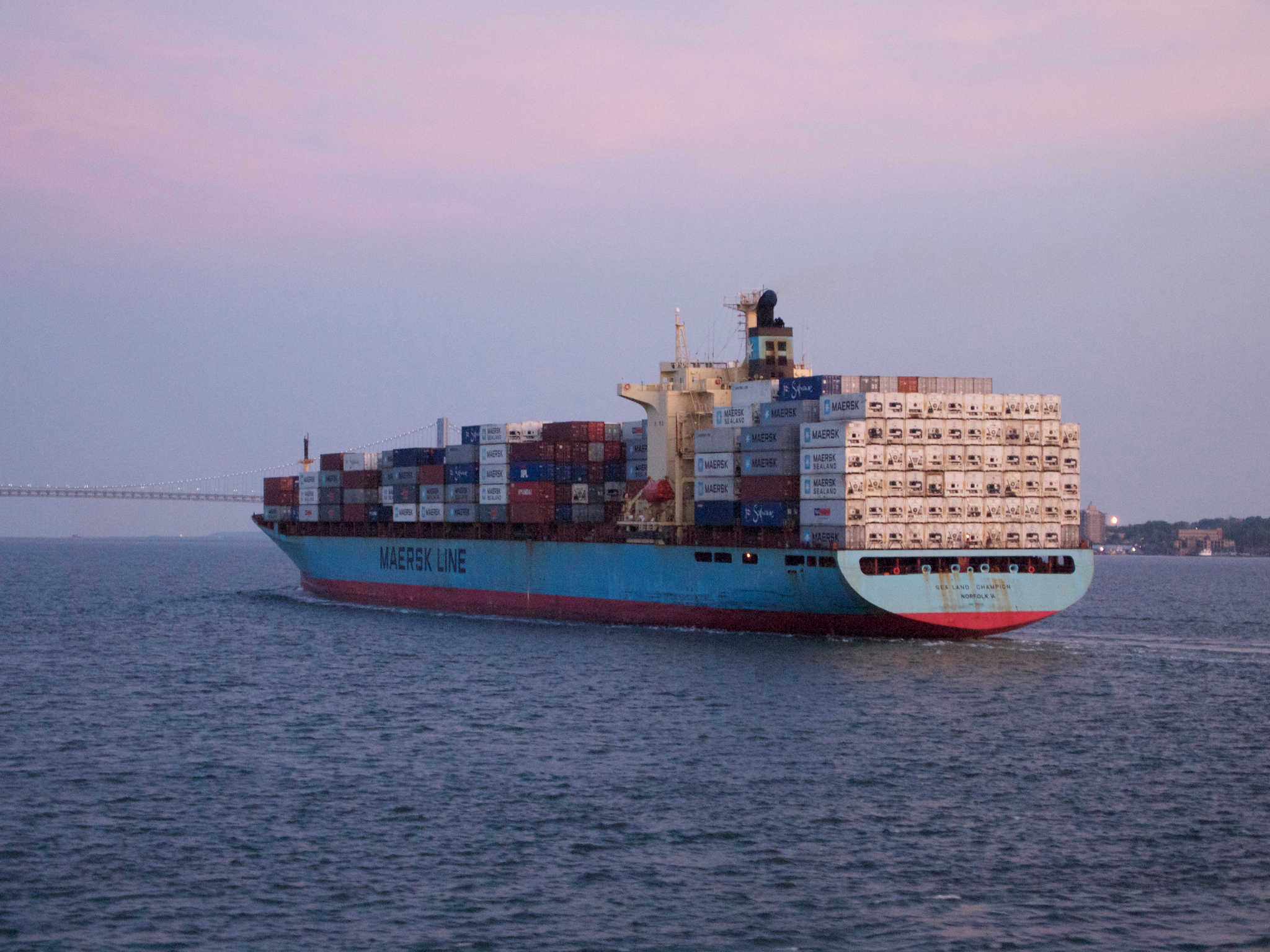Like many forms of transportation, container shipping benefits from economies of scale in maritime industry. In terms of lower costs per TEU, the rationale of steamship lines to have larger ships becomes obvious since the benefits increase with the capacity of the ships. Thus, there is a powerful trend to increase size of vessels among major vessel operators. However, bigger vessels do not always carry advantages and they may cause unwanted consequences to other components of container shipping when you look at the bigger picture.
The story begins on 26th of December, 2015. The largest cargo ship to visit the United States, a ship just about as long as the Empire State Building, CMA CGM Benjamin Franklin berthed in the Port of Los Angeles. An official delegation gathering Los Angeles Mayor Eric Garcetti and other high-ranking elected officials from throughout Southern California was there to welcome the vessel’s arrival. It is capable of carrying twice as much as the largest ships arriving five years ago and it is a sign of the changes underway in the global shipping industry as ocean carriers seek to cut costs. However, is it also the evidence of an excess of mega-ships destined to overwhelm the industry?
Even though shipping companies say that the only way to survive competition is to go big, shipping analysts fear that the answer is yes.
The continuous increase in the size of the average ship has already posed problems for container traffic in US, where infrastructure improvements such as deeper channels and larger cranes have come more slowly than in Asia and Europe. Harbor channels must be dredged to a certain depth and in some cases widened. Larger and stronger wharves are needed to accommodate super post-Panamax cranes that reach out over 20 rows of containers on the ships. These requirements, however, are only the price of admission into the mega-ship arena.
The greatest challenge comes from the surge of containers that must be lifted off of and on to a vessel in a narrow window of time. Surges of 4,000 to 5,000 containers over the two to three days the ships are in port choke a terminal’s yard and gate operations and often generate long lines of angry truckers at the gates.
This is just the front page of the story. On the market side, the growing supply of vessels also outstrip the demand. A report from Moody’s Investors Service showed that global container ship capacity through the end of 2015 increased roughly 10% but the demand grew only 4%. Slowed growth of trade has led to over-capacity that may drive down prices below the point of survival for some in the industry. Some of the financial consulting firms have argued that the debts behind these major ship purchases will lead the $6 trillion industry into consolidation or alliances among major shippers such as CMA CGM, Maersk and MSC. Some of these problems has already come home to roost in the shipbuilding industry itself, with one state-backed Chinese firm filed for bankruptcy at the end of 2015.
However, vessel operators do not agree with these arguments as CMA CGM just announced a couple weeks ago that following recent successful trial visits to several American ports, it will divert all six of its 18,000 TEU flagship vessels from their European route to replace smaller container ships on the firm’s Asia-to-US West Coast run. Marc Bourdon, president of CMA CGM America, says “If you’re looking at the LA-Long Beach port complex, there’s enough cargo to justify these vessels, but the infrastructure has not been up to the job.” With the West Coast congestion just easing up this year, the arrival of mega-ships might throw the ports into chaos again.




